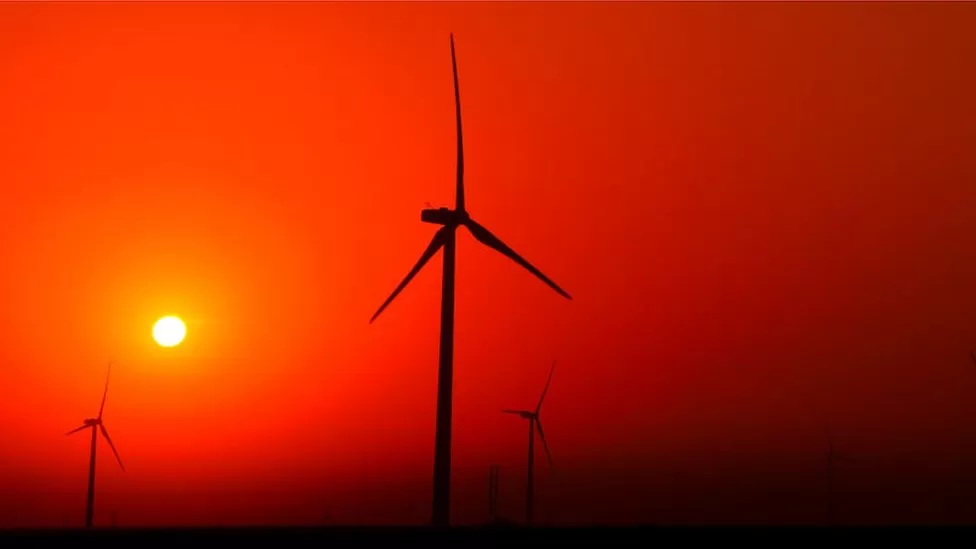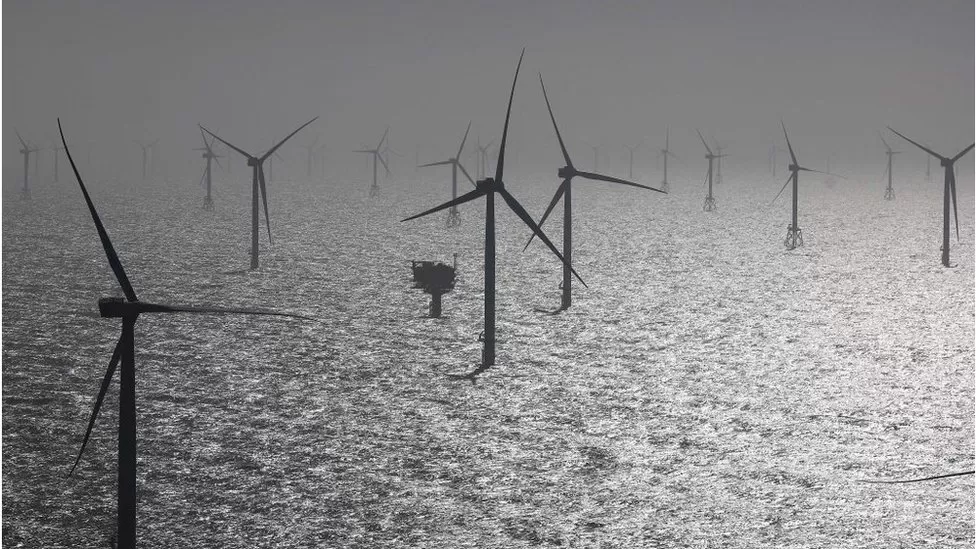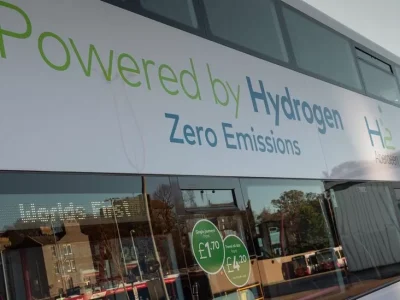The world will likely use fewer fossil fuels to produce electricity this year in a “turning point” for planet-friendly energy, a new report says. It would be the first-ever annual drop in the use of coal, oil, and gas to generate electricity, outside of a global recession or pandemic. As a result, fewer warming gases would be released during energy production. The authors attribute the expected change to a boom in renewable energy led mainly by China. Wind and solar now produce 12% of global electricity with enough wind turbines added in 2022 to power almost all of the UK. Renewables are set to meet all growth in demand this year, the study from energy analysts Ember says.

Making electricity is the single biggest contributor to global warming, responsible for over a third of energy-related carbon emissions in 2021. So phasing out coal, oil, and gas in this sector is seen as critical in helping the world avoid dangerous levels of climate change. This new study looks at data from countries representing 93% of global electricity demand. This, the fourth edition of Ember’s Global Electricity Review, indicates that significant progress is now being made in reducing the role of fossil fuels in power production.

The major developments are the continuing rise of solar and wind as economically viable sources of electricity. Around the world, solar grew by 24% last year, enough to meet the annual demands of a country as big as South Africa. Taken together with nuclear and hydropower, clean sources produced 39% of global electricity in 2022. The report finds that electricity produced last year was, in effect, the cleanest ever made. But despite this, carbon emissions from the sector also continued to rise, as coal use edged up. According to the report’s authors this is because overall demand for electricity rose, and not all of it was met from clean sources.
There were also problems with nuclear and hydro electricity in 2022, with many French reactors offline, and Europe’s rivers too low in many places for hydro generation. However the report says that in 2023, the growth of wind and solar will be greater than the rise in demand – and this will start to turn the tide on warming gases. “When you stop adding more fossil fuels to generate your electricity, you start seeing a fall in emissions,” said Malgorzata Wiatros-Motyka, the report’s lead author. “This is extremely important in the context of rising electrification, as we have more electric vehicles, more heat pumps, so cleaning the power sector will drive emissions down in other sectors as well.”

While the fall in fossil fuel emissions in electricity this year is expected to be small, around 0.3%, the authors believe the drop will continue and accelerate in subsequent years. Key to this is a fall off in the use of gas, which fell slightly last year according to the report, with some countries like Brazil seeing a surge in hydro power which reduced their use of gas by 46% in 2022. “We now have reached this next turning point of starting to see a new era of falling fossil fuel power sector emissions. We know that wind and solar are the answer and we’ve just got to get on with a roadmap for building them as quickly as possible,” said Dave Jones, from Ember, one of the report’s authors.
One significant player impacting the overall trend is China. Around 50% of the global addition of wind power came from China and about 40% of the world’s new solar came from from the country that’s also the world’s biggest use of coal power. “There is a chance that at the rate that China is building wind and solar and all types of clean generation, that they achieve that peak in coal generation earlier than 2025, which would be significant,” said Mr Jones.

Energy experts acknowledge that curbing fossil fuels in power generation could well be a “turning point”, but much more remains to be done. “The earliest peak of coal power generation was in the UK in 1979,” said Prof Jessica Jewell from the University of Bergen, who was not involved with the study. “Nevertheless, it took decades to fully phase out coal power, for example the UK still used a bit of coal in 2022, 43 years past the peak. In order to reach clean energy goals we don’t have 40 or even 30 years, we need to fully decarbonize electricity in a much shorter time.”
![]()





